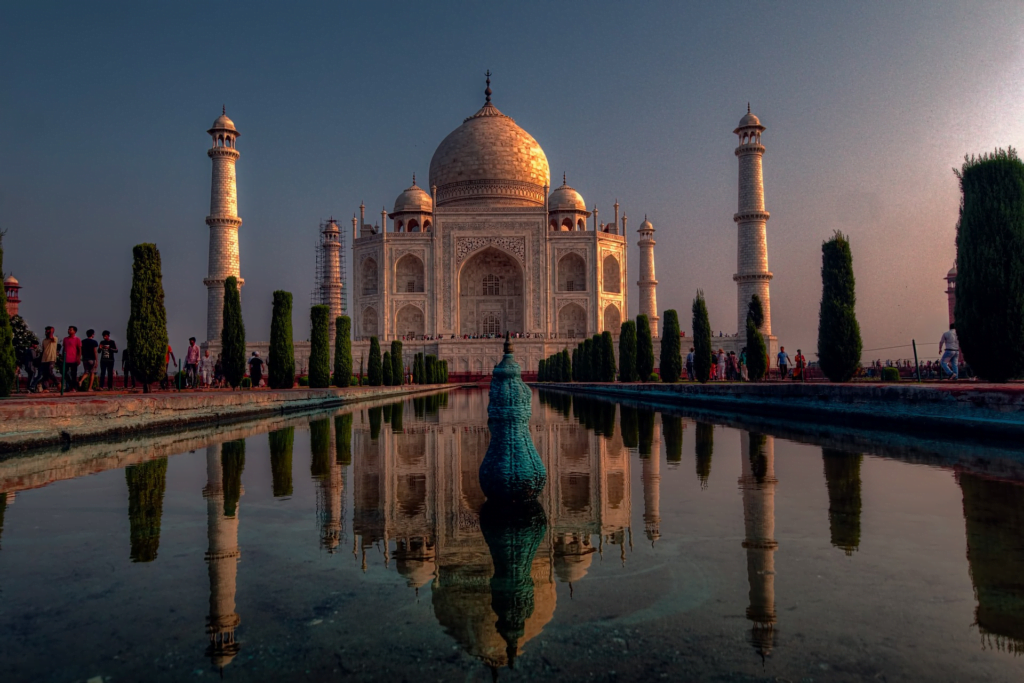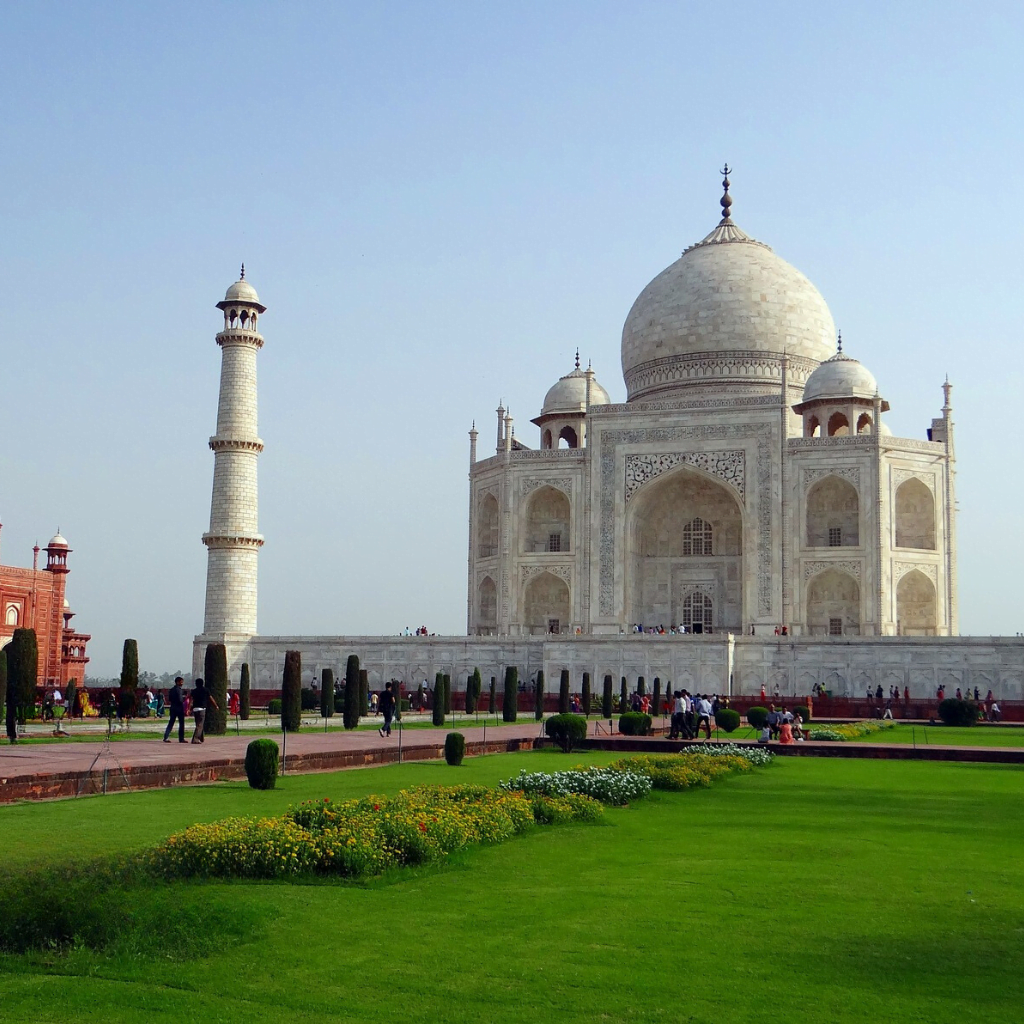Table of Contents
Greetings, fellow travelers and admirers of beauty! Today, let’s immerse ourselves in the enchanting story of one of the most iconic wonders of our world – the Taj Mahal. This architectural masterpiece, nestled in the heart of India, is not just a marble mausoleum; it’s a symbol of love, a testament to human craftsmanship, and a mesmerizing wonder that has captured hearts for centuries.
The Taj Mahal: A Tale of Eternal Love Carved in Marble
A pristine, ivory-white structure standing on the banks of the Yamuna River, framed by lush gardens, and crowned by a dome that seems to touch the heavens. This is the masterpiece of Mughal architecture and built by Emperor Shah Jahan in memory of his beloved wife, Mumtaz Mahal.
The Marvel in Marble
The sheer grandeur of the Taj Mahal is awe-inspiring. As you approach, the ivory mausoleum reflects different hues with the changing daylight. The intricate carvings, the delicate inlay work, and the symmetrical gardens – every element whispers the story of a profound love that transcends time.
The Symmetry and Symbolism
One of the marvels of the Taj Mahal is its perfect symmetry. The four minarets surrounding the main structure, the identical gardens on either side and even the placement of the ornate calligraphy – everything is meticulously balanced. It’s not just architecture; it’s a mathematical and artistic marvel.
The Changing Faces of the Taj
With each sunrise and sunset, the Taj Mahal undergoes a breathtaking metamorphosis. Bathed in the soft hues of dawn or the warm glow of sunset, it’s a spectacle that transcends the physical and enters the realm of the magical. Moonlit nights add another layer of romance, casting a silver sheen over the marble facade.

Tips for Your Taj Mahal Expedition
1. Sunrise Magic:
Visit at sunrise for a magical experience. The changing colors are a sight to watch and enjoy.
2. Local Tales:
Engage with local guides to hear the fascinating stories and history behind the Taj Mahal.
3. Comfortable Stroll:
Wear comfortable shoes. You’ll want to take a stroll through the gardens.
4. Capture the Moments:
Don’t forget your camera or smartphone. You’ll want to capture every angle of this architectural gem.
Best time to Travel
The best time to travel to the Taj Mahal in Agra, India, is during the winter months, from October to March. This period offers more favorable weather conditions for exploring the monument and its surroundings.
Key considerations for the best time to visit the Taj Mahal:
- Winter (October to March):
- Pros: Pleasant temperatures, clear skies, and comfortable weather for sightseeing.
- Cons: The period from December to January can be chilly in the early mornings and evenings.
- Spring (March to April):
- Pros: Mild temperatures and the gardens around the Taj Mahal are in full bloom.
- Cons: Increasing temperatures as you approach April.
- Early Autumn (September):
- Pros: The weather is starting to cool down after the monsoon season, and the crowds are relatively smaller.
- Cons: The early part of September may still have lingering monsoon rains.
Avoiding the summer months (May to August) is advisable due to the intense heat, especially in June and July. It can also be crowded during weekends and holidays, so planning your visit during weekdays or non-peak hours can enhance your experience. It’s always a good idea to check the local weather forecast before planning your trip to Taj Mahal.

The Taj’s Timeless Allure
The Taj Mahal is not just a wonder of the world; it’s a living testament to eternal love and exquisite craftsmanship. It invites you to step into a world where passion and artistry converge, creating an experience that goes beyond sightseeing. It’s a journey into the heart of history, romance, and architectural brilliance.
So, the Taj Mahal welcomes you whether you’re a history enthusiast, a romantic soul, or just someone seeking the magic of an extraordinary monument. It’s not merely a wonder; it’s a legacy that beckons you to be a part of its enduring story. Happy travels!
Stay Updated and Inspired!







